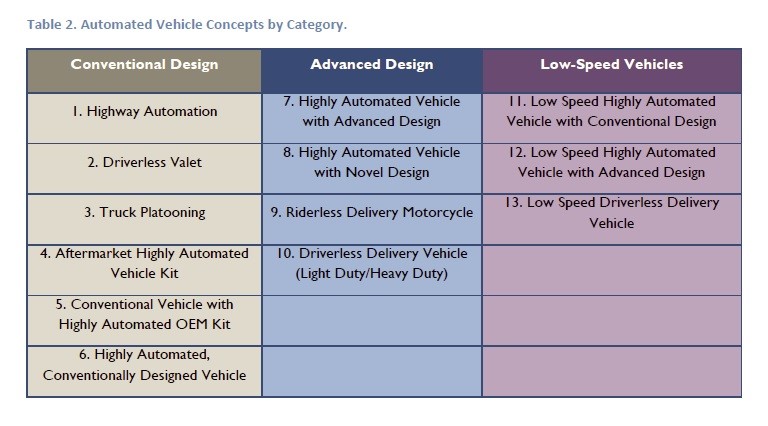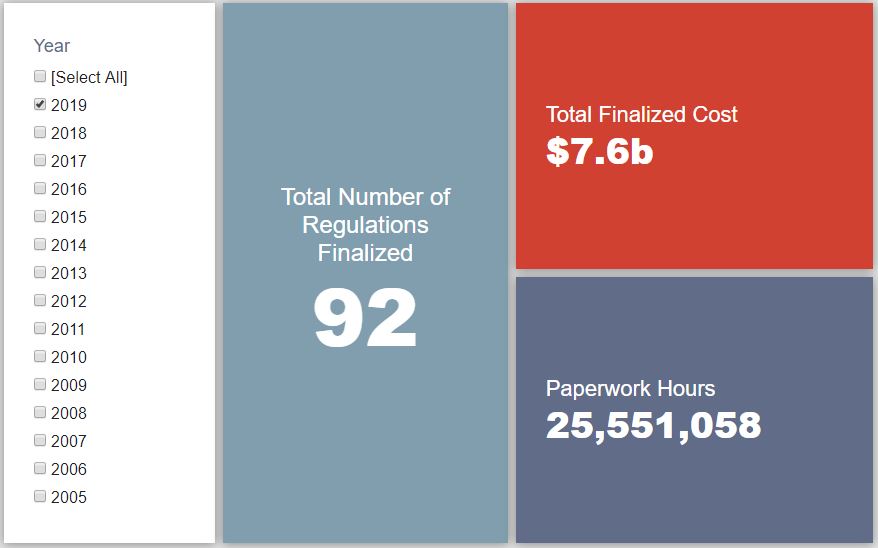Week in Regulation
June 3, 2019
A Proposed Rule Kind Of Week
Even accounting for the holiday-shortened workweek, last week’s regulatory flow was relatively modest. Interestingly, despite 41 “final rule” documents hitting the pages of the Federal Register, there were none that included a quantified cost or savings estimate. Thus, this week’s haul comes entirely from rulemakings still in the “proposed” stage. Across these proposed rules, agencies published $42.5 million in total net costs and added 627,438 hours of paperwork.
REGULATORY TOPLINES
- New Proposed Rules: 40
- New Final Rules: 41
- 2019 Total Pages: 25,443
- 2019 Final Rule Costs: $7.6 Billion
- 2019 Proposed Rule Costs: $5.4 Billion
TRACKING THE REGULATORY BUDGET
With no final rules this week, there was no change to the fiscal year (FY) 2019 regulatory budget under Executive Order (EO) 13,771. The most significant regulatory action was a Department of Labor proposal regarding union financial reporting that would impose roughly $123 million in costs over a 10-year period. The most significant deregulatory actions came from the Securities and Exchange Commission – an independent agency whose actions fall outside the scope of EO 13,771. The two actions amend various filing requirements, resulting in nearly $72 million in combined annual savings.
So far in FY 2019 (which began on October 1, 2018), there have been 48 deregulatory actions (per the rubric created by EO 13,771 and the administration’s subsequent guidance document) against 22 rules that increase costs and fall under the EO’s reach. Combined, these actions yield quantified net costs of roughly $8.6 billion. This total, however, includes the caveat regarding the baseline in the Department of Agriculture’s “National Bioengineered Food Disclosure Standard.” If one considers that rule to be deregulatory, the administration-wide net total is approximately $1.9 billion in net costs. The administration’s cumulative savings goal for FY 2019 is approximately $18 billion. Agencies now have a four-month window to reach that goal.
THIS WEEK’S REGULATORY PICTURE
One can describe “regulatory policy” in many ways: mundane, opaque, monotonous, complex, legalistic. The list goes on. In order to help provide a clearer and more straight-forward view into this world, the American Action Forum (AAF) will seek to provide a brief illustration of a notable regulatory trend we have identified in a given week. This week’s entry: Actions from the Department of Transportation (DOT) aimed at enabling automated innovation.
This week DOT published three notices in the Federal Register – from three separate agencies – that DOT hopes will help reduce regulatory barriers to the advancement of automated transport. This continues a trend at the department that AAF first noted in this space in April. The image below comes from a March 2016 DOT review of highway safety standards and automated vehicles, and shows 13 vehicle concepts DOT envisioned at the time.

The National Highway Traffic Safety Administration (NHTSA) published an advanced notice of proposed rulemaking (ANPRM) that would have the broadest effect on American travel, as it relates to passenger vehicles. That document, titled Removing Regulatory Barriers for Vehicles With Automated Driving Systems, seeks public input on the “near- and long-term challenges of testing and verifying compliance” with vehicle safety standards. Specifically, NHTSA hopes to learn what current regulations stand in the way of allowing testing of automated driving systems.
The Federal Motor Carrier Safety Administration (FMCSA) similarly issued an ANPRM this week titled Safe Integration of Automated Driving Systems-Equipped Commercial Motor Vehicles. FMCSA seeks public comment what regulations need to be repealed or revised to allow for integrating automated commercial vehicles, like tractor trailers, on highways.
Meanwhile, the Federal Railroad Administration published the action with the most immediate effect on allowing automated transport. It withdrew a 2016 proposed rule that would have required covered trains to have crews of at least two persons. FRA cited a lack of evidence that two-person crews would prevent significant accidents and the effect that setting a mandatory crew size would have on the development of automated trains. More information on the rule and its lessons for regulators is available here.
These actions continue a clear trend that DOT is prioritizing removing regulatory hurdles that may stand in the way – either explicitly or implicitly – of advancements in automated technologies.
TOTAL BURDENS
Since January 1, the federal government has published $13 billion in net costs (with $7.6 billion in finalized costs) and 27.9 million hours of net paperwork burden increases (with 25.6 million coming from final rules). Click here for the latest Reg Rodeo findings.












